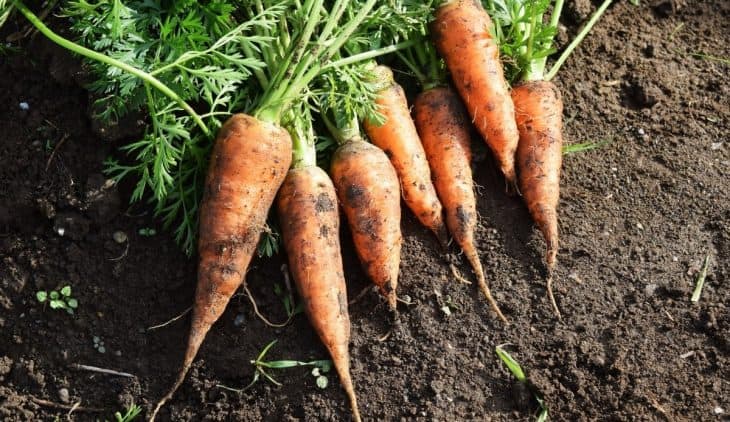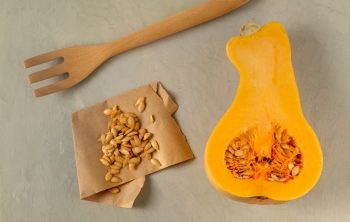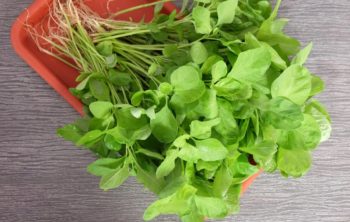Are you wondering how to tell when carrots are ready to pick? Let’s find out. Carrots are one of the easiest vegetables to grow in your garden and this fruit is packed with great nutritional benefits.
Growing and harvesting carrot is an awesome way of taking advantage of the amazing nutritional value they offer. It is important to have an idea of how to tell when carrots are ready to pick so you can enjoy an amazing crop yield.
In this article, we will be discussing how you can decipher when carrots are ideal for harvest and many more. So, continue reading for more info on this.
How Do You Know When Carrots Are Ready To Pick?
It is pretty easy to grow carrots. However, how to tell when carrots are ready to be picked may be quite dicey. This is usually because carrots are underground vegetables meaning they tend to grow underground. Hence, trying to monitor the maturity progress from outside may be confusing unlike other fruits such as cucumbers, peppers, etc that grow outside.
If you’re new to growing underground vegetables such as carrots and you wish to learn how to tell when they are ready to pick, we’ve got you covered. So, below are some tips to know when carrots are ready to be harvested.

Carrot Harvest: When To Pick
The proper period to harvest carrots will depend on the variety been grown. Hence, you should check out the information on your seed packet to know the harvest period.
Some carrot varieties can be harvested around 58 to 80 days from planting. Others can take about 75 to 100 days. All these majorly depend on the variety.
For instance, you can harvest baby carrots from 50 to 60days from planting. However, if you wish to harvest matured carrots, you will need to wait a few more weeks. Matured carrots should be ready for harvest in around 75 days.
You can always harvest your carrots once they are large enough to be eaten. It’s not necessary to wait for them to finish growing. Leaving carrots for too long to grow large may cause them to turn woody and lose their sweet taste.
Read more about How to Harvest Leaf Lettuce
More Tips To Know When To Pick Carrots
- To know when your carrots are ready to be harvested, the shoulder or the top of the carrot will be around ½ to ¾ inch. This is around 1.5 cm to 2 cm (in diameter).
- The top of the carrot will also begin to slightly pop out of this
soil , but this may not be in all cases. - The color of the carrot will as well be vibrant in color once they are ready to be picked.
Tips On How To Pick Carrot
So we’ve learned how to tell when carrots are ready to pick. Let’s take a look at how to pick them appropriately.
· Root Diameter Check
Once you’ve estimated the days to maturity and as well check the size of the carrot by looking at the root diameter, you can proceed to harvest. You can predict how the tips of the roots are and how big they are once they bulge out.
However, bulging of the tip does not occur in all cases. Hence, you can simply brush some
· Hydrate Soil
We recommend you hydrate the soil before harvesting. This is to ensure digging and removing carrots is easier for you. You can plan harvest after a day after rain or a day after watering.
· Loosen The Soil
After you must have dampened the
Jobe’s Organics Vegetable & Tomato Fertilizer Spikes
· Pull The Roots
Now you can pull out the roots since your
· Brush Excess Sand
We recommend you don’t wash the carrot after picking only if you plan to eat them right away or in few weeks. Just brush off excess sand or mud and store.
· Remove Top And Store
Before storing your carrots, you should remove or cut off the top green. The green should only be trimmed and about 1 inch should be left attached to the carrot. The green can as well be saved for compost.
Storing Carrot
If you’ve decided to harvest your carrot, make sure you’re harvesting what you will use in a period of two to four weeks. Carrots will ripe around the same time. However, harvesting them all at once isn’t necessary. You can simply leave your carrots in the ground for extra 4 weeks more. The best preservation method is leaving them in the
When the cold season approaches, make sure to protect carrots from the cold. Use some covering or extra mulch to protect them from cold. However, once it starts freezing, ensure you must have harvested the last carrot.

Refrigerating Carrots
You can as well store the harvested carrots in the fridge. Remember not to wash the carrots even when muddy. Only brush off excess sand or mud.
The carrots should be put in a container of water and placed inside the refrigerator. If by any chance the water gets cloudy and you’re not ready to make use of the carrots, simply replace the water with fresh ones. You can do this and maintain a fresh carrot for more than a week or two weeks.
FAQ’s
How do I know when my carrots are ready to be pulled?
When your carrots are at the right size, they will be bright and shiny with a good amount of greens attached. You don’t want to pull them too early, because you may end up with mushy carrots and nothing else. And, if you pull them too late, the greens will dry out and die off. You can tell when your carrots are ready by looking at their leaves.
If you see any yellowing, browning or curling leaves, it’s time to pull them. It will help your carrots to grow faster and look healthier.
How long does it take to harvest carrots?
In general, they take around three months to harvest. Carrots are a great vegetable to grow in the garden. They are easy to grow, and can be harvested throughout the summer. You can grow them from seed, or you can plant the young plants that will become your mature carrots in late spring. Carrots grow best when temperatures remain above 50 degrees F. The soil should be rich and well-drained.
You can harvest carrots as soon as they are big enough to eat. Carrots tend to get bigger and sweeter when they have more sun exposure. For best flavor, harvest your carrots when they are 6 inches in diameter.
The main factor determining when they'll be ready is how much sun and warmth they get during that time. If you're growing them in a cold frame or greenhouse, they'll probably be ready sooner.
Why are the carrots that I grow so small?
There are a number of reasons why carrots might be small. They can be affected by the soil composition and/or moisture content in the root zone, or they can have a genetic defect that causes them to not produce as much of an edible part of the carrot. In addition, carrots can be affected by how well the roots are grown (i.e. if they are grown on a flat surface or in the ground).
Carrots grown in the ground will have less surface area for air to circulate around them and may not get enough sunlight to make good sized carrots. Carrots grown in the ground can also be more prone to diseases and pests. The carrots may not have enough space to grow and therefore may not get as tall as they would if they were grown in pots or raised beds. The soil composition and/or moisture content of the root zone can also affect the size of your carrots. If the soil is sandy, the roots will not be able to absorb water as well. This can cause the roots to become dry and weak. If the soil is too wet, the roots will rot and die. If the soil is too compacted, it can make it difficult for roots to grow deep enough to get good sized carrots.
How To Tell When Carrots Are Ready To Pick: Final Say
How to tell when carrots are ready to pick is not so complicated. All you need to do is to have the right information. Simply follow our recommended tips and learn how you can tell when your carrots are ready to be harvested.

Eunice is an enthusiastic gardener with a passion for growing beautiful flowers. She loves nothing more than spending time in her garden, tending to her plants and enjoying the outdoors. Eunice has been gardening for over 15 years and has developed a unique style of landscaping that is both practical and aesthetically pleasing. She is especially fond of growing roses and enjoys experimenting with different varieties and colors. Eunice takes great pride in her garden and often shares the fruits of her labor with friends and family. In her spare time, she enjoys reading gardening magazines and attending local horticulture events. Eunice is passionate about her hobby and is always eager to share her knowledge and experience with others.





